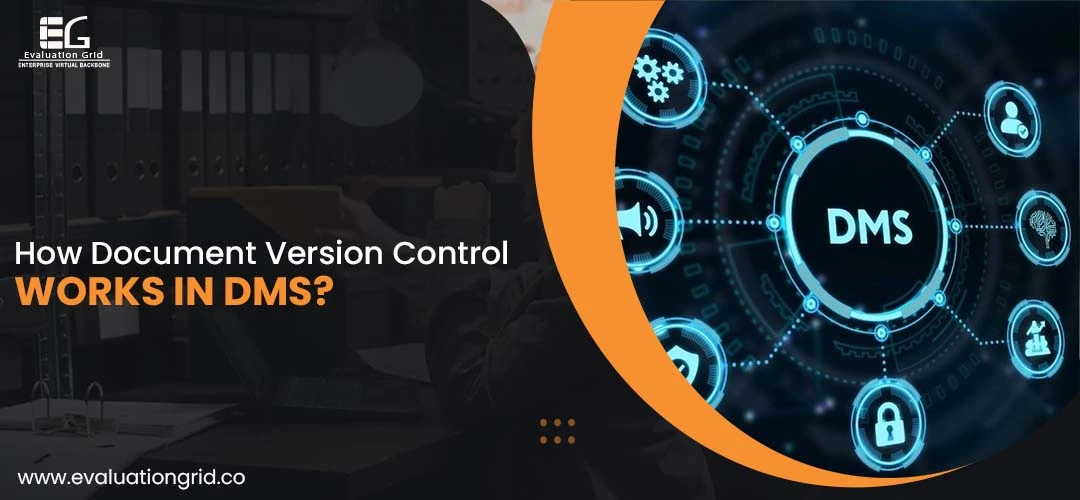Not being able to recall when a file was last edited is a major pain. Old files, erased data, or no idea who changed what when are common problems that teams have to cope with. In such a situation, document version control in DMS becomes your greatest friend.
A Document Management System with built-in version control doesn’t just organize your files — it safeguards your workflow, reduces costly errors, and adds traceability every step of the way.
Why Use Document Version Control?
With version control, you can be sure that a record of each edit will be preserved indefinitely. Never again will you have to dig through email conversations to get the most recent version of the file or wonder who made the update. Viewing, comparing, and reverting to earlier document versions becomes easy, whether you’re working on contracts, reports, or technical instructions.
Versioning in collaborative workspaces improves responsibility, backs up compliance norms, and provides stakeholders with the necessary transparency. From little tweaks to massive overhauls, every revision has a transparent, auditable history that cannot be accidentally erased.
The Components of a Version Control System
The following are essential parts of any reliable document version control system:
- Version Logs: The exact sequence of all saved edits, including who made what changes and when.
- Access Controls: To avoid unauthorized changes, specify who can see, modify, or undo changes in documents.
- Timestamps & User Stamps: Keep track of who made each change and when automatically.
- Compare Features: Instruments for concurrently viewing differences between two document versions.
- Rollback Functions: With a single click, you can roll back to any version of your documents.
Put these parts together, and you get an editing environment that’s perfect for regulated sectors and fast-paced teams since it’s transparent and secure.
How Does a Document Version Control System Work?
When a document is created or submitted to your DMS, it all starts. It is common practice to automatically create a new version whenever you save your work. A basic explanation is this:
- Initial Upload: The document becomes Version 1.0.
- First Edit: A user updates the file. It becomes Version 1.1 (or 2.0 depending on your system).
- Continued Edits: Each save after that adds to the version history.
- Tracking & Logs: All changes are logged and stored, complete with metadata (who, what, when).
- Access or Rollback: Authorized users can view any version or roll back to a previous one as needed.
This improves teamwork by making sure all parties are aware of and able to handle sensitive information.
Getting Started with Document Version Control
The best place to begin learning about version control is:
- Choosing a DMS with Built-in Version Control: Not all systems have it, so check before investing.
- Setting Access Rules: Define who can edit, comment, or roll back documents.
- Educating Your Team: Make sure everyone understands how versioning works and why it is important.
- Standardizing Workflow: Use consistent naming and update practices to avoid confusion.
If you’re evaluating tools, don’t miss our expert guide on the Top 10 Features to Look for in a Document Management System to help you choose the right platform for your team’s version control needs.
How Version Control Works in a Document Management System
What actually takes place in a version-controlled DMS is as follows:
- When a document is saved, the DMS assigns a unique version number.
- The system automatically logs changes, user info, and timestamps.
- Some systems use check-in/check-out functionality to lock files during editing.
- Users can view or restore any version from the version history.
- Advanced systems also offer side-by-side comparisons and change highlights.
Version control maintains data integrity across departments and teams by preserving each revision and preventing errors and duplication.
How to Use Document Numbering and Naming Conventions
Achieve the most out of version control by sticking to consistent naming practices. Files can be more easily found, sorted, and identified in this way.
Best practices include:
- Use a consistent format like: ProjectName_DocumentType_V1.0_Date
- Include author initials or department tags when needed
- Avoid vague terms like “final” or “latest” — version numbers work better
Example: ClientProposal_Marketing_V2.1_2025-05-24
The use of structured naming reduces confusion and facilitates easier version tracking.
Evaluation Grid for DMS
Finding the correct document version control in DMS is important. And Evaluation Grid is useful in this situation.
Reasons to Use Evaluation Grid:
- Examine leading DMS solutions side by side, including comprehensive version control capabilities.
- Use versioning style, access controls, or rollback tools to filter platforms.
- Find out what actual company users think about version control and how well it works for them.
- Experience version management in action with the help of professional reviews and demonstration films.
Whether you’re a small team or a multi-department organization, Evaluation Grid helps you find a solution that meets your versioning needs without the guesswork.
Conclusion
A single mistaken overwrite in a digital workplace might result in rework taking hours, or even worse, lost revenue. For this reason, version control is an integral part of any advanced DMS.
As a result, your team will be able to work together with complete honesty and trust. Every document your team works on will be more trustworthy after using versioning, which includes features like audit trails and easy rollbacks.
Ready to simplify your workflow with reliable document version control? Experience top DMS platforms now on Evaluation Grid and find the right match for your business!






